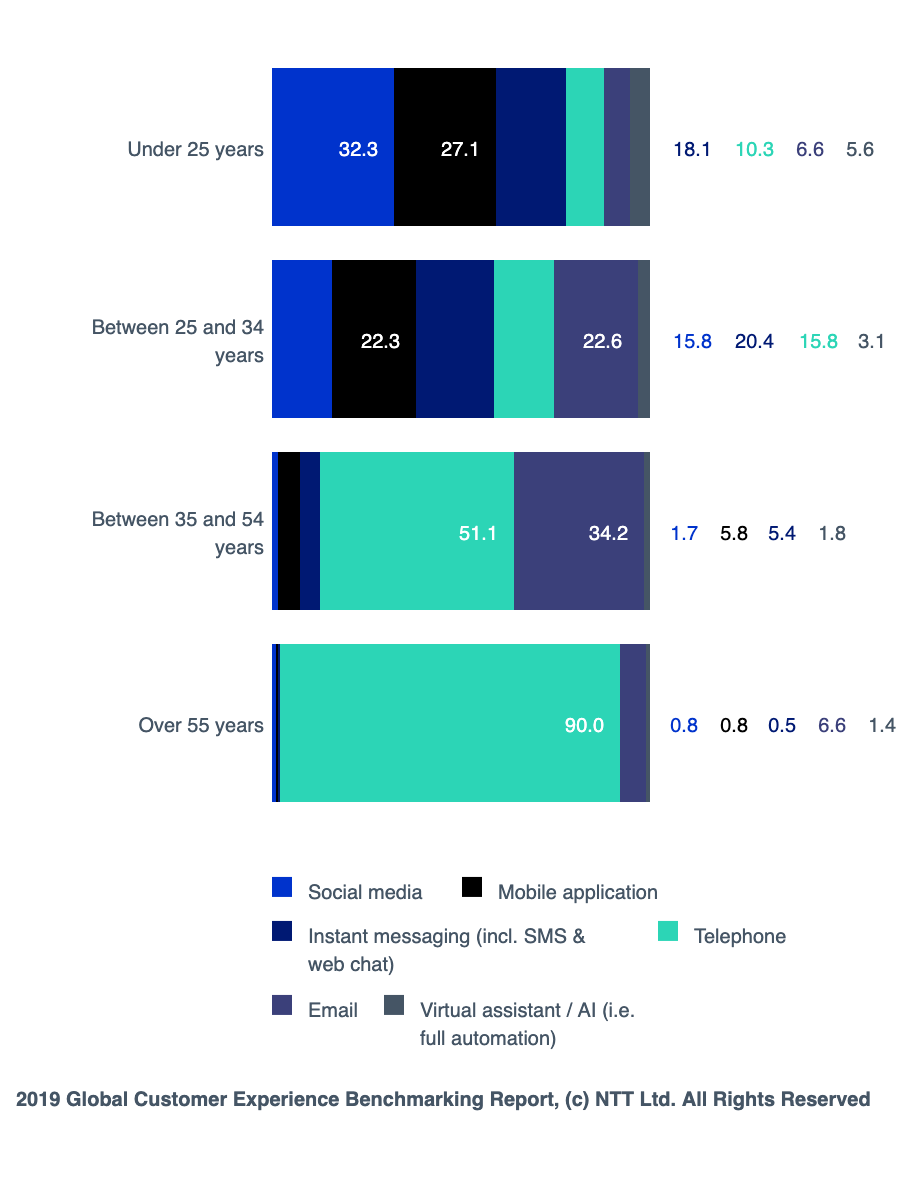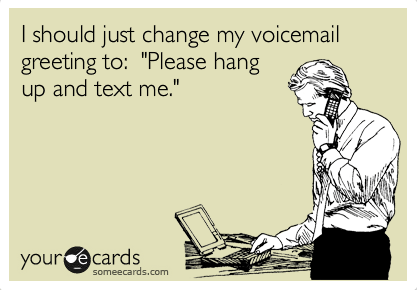
Over the last few years working with digital marketing agencies and lead-gen companies, I’ve noticed something interesting: Some consumers really don’t want to pick up the phone to contact your business. Like, really don’t. Won’t.
Even highly qualified potential customers who need your business’s help with semi-urgent problems—an infestation of pests, mold in their homes, ghastly medical symptoms or a DUI—would sooner peck out the details into an email, web form or text message rather than call. Why?
Reviewing the Research
The research on consumer preferences is helpful to a point. Every year, dozens of research efforts aim to answer the question, “What communication channels do customers prefer?”
Surveys such as the CMO Council’s Critical Channels of Choice report, which polled 2,000 consumers across five generations on this and related questions, offers the same fundamental conclusion as others before and since: “It depends.” Helpful, right?
Perferences are changing, but it’s not as simple as “out with the old and in with the new”. Nor are preferences strictly generational, even though according to NTT’s Global Customer Experience Benchmarking Report, Gen Z and Millennial consumers do show an overwhelming preference for communicating with companies via digital channels.

In fact, consumer preferences for when and how we communicate with businesses are highly contextual. And there are suggestive nuggets in the research to help us give this truism some color. In the CMO Council’s report, for example, survey participants identified three top attributes that make a channel indispensable to them: convenience (50%), reliability (45%), and speed (41%).
Applying insights like these to our own leads and customers can potentially help us connect the dots of what they want and win more business and loyalty from them over time.
So, Five Things Customers Would Rather Do?
To make good on the “listicle” implicitly promised in the title of this post, let’s work through five things customers would rather do than call your business, based on what we now know 😉
Just gleaning a few ideas from the research, we know that channel preferences are contextual and that convenience, reliability, and speed tend to matter most.
The following list is only a thought exercise, but a worthy one for any business owner to undertake for themselves with respect to their own business. Applying insight from market research, along with a healthy dose of our own observations and experience, we can imagine the context that brings a customer into conversation with our business in the first place and optimize the tools we have to win them over.
So here are five things I can imagine a customer would rather do than call you, in no particular order:
#1 Not Call You
Unless you sell jet-powered surfboards or life-like stuffed fantasy foxes or something else totally fun, your potential customer probably doesn’t want to call you at all. They have to.
They likely have some need to satisfy or problem to solve, and you can help. Of course, so can your competitors. That’s why recognizing any source of friction preventing customers from calling you should make you reconsider what you can do to invite or initiate those conversations, whether that’s by doing more outreach, opening up more communication channels, or both.
#2 Email You
Email remains a convenient way for customers to express interest in many business categories, from home services to health and medical services. It’s asynchronous, non-intrusive and high-bandwidth, meaning both customer and company can convey a lot of information quickly by email.
A customer looking for a home renovation, for example, can reach out to a contractor with detailed specs or even architectural plans, allowing the contractor to qualify the project and themselves without wasting everyone’s time going blind into a phone call or a site visit.
Of course, email has a reputation from both consumer and business perspectives for being slow—and sometimes a “black hole”—eroding any reputation for speed or reliability. Most of our inboxes are crowded with marketing, spam and other unread messages. Email inboxes have become the place where once pressing conversations now go to wither and die, drowned by white noise.
#3 Fill Out a Form
The ubiquitous “website contact form” has for years been the darling of marketers obsessed with building web-based marketing funnels whose performance is highly measurable. Every little detail of the design, copy and colors can be tweaked and evaluated “objectively” giving a bit of scientific rigor to the craft.
For consumers, forms are convenient in the sense that they are like email: we fill them out on our own time, submit enough info to qualify both parties before further time is invested, etc. And we do so because a form is often the only option available on business websites besides a phone number. And that’s because, well, marketers 😊
Still, some consumers will balk at web forms—and web chat—for their required fields, their impersonal nature, and the sense of a lack of privacy if sharing sensitive information on the web.
#4 Text You
Text messaging has become the go-to channel for interpersonal communication for many of us in our personal lives. If we need to arrange a get-together among friends or find out if a family member needs something from the store, we text.

The convenience and speed of getting things done by text is so alluring, it has naturally colonized our expectations of business communications, as well. For the last-minute shopper who wants to know if your store carries a certain product or if your florist shop can put together a dozen roses by 4 o’clock, it’s ideal—and increasingly expected—that they can text you for that information.
The reliability of text messaging comes down to how businesses implement it. Those who buy into the power of text only for bulk text “marketing” and fail to engage two-way communication with customers risk eroding tthe value of the channel—and miss a very big opportunity, indeed.
#5 Text a Competitor
Which brings us to the fifth thing a customer would rather do than call your business, and that, of course, is text a competitor. Oof.
But it’s hard to overstate how compelling text messaging is as a channel—for consumers and businesses alike. And yet, many businesses have yet to embrace the medium. Well, they shouldn’t be surprised then when a potential customer who’s waiting for a call or email starts texting with a competitor and decides that the competitor is easier to do business with.
Business Texting For the Win-Win
At Switchbird, of course, we’re biased in favor of text messaging. But we chose that bias for a reason. In fact, we love text messaging from the business owner’s perspective for many reasons: it’s preferred by consumers, has extremely high open and engagement rates, the conversations can be shared across your team, operations can be scaled with templates and automations, and at the end of the day, your customer data and relationships are owned by you, not Facebook or Google.
So while you’re waiting for your next customer call, a good thought exercise might be to consider whether your business has the optimal channels and tools in place to make the most of every opportunity out there—especially the ones that might not come calling.
